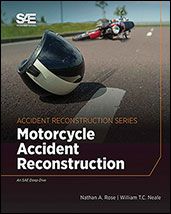Technical Paper
A Compendium of Passenger Vehicle Event Data Recorder Literature and Analysis of Validation Studies
2016-04-05
2016-01-1497
This paper presents a comprehensive literature review of original equipment event data recorders (EDR) installed in passenger vehicles, as well as a summary of results from the instrumented validation studies. The authors compiled 187 peer-reviewed studies, textbooks, legal opinions, governmental rulemaking policies, industry publications and presentations pertaining to event data recorders. Of the 187 total references, there were 64 that contained testing data. The authors conducted a validation analysis using data from 27 papers that presented both the EDR and corresponding independent instrumentation values for: Vehicle velocity change (ΔV) Pre-Crash vehicle speed The combined results from these studies highlight unique observations of EDR system testing and demonstrate the observed performance of original equipment event data recorders in passenger vehicles.

